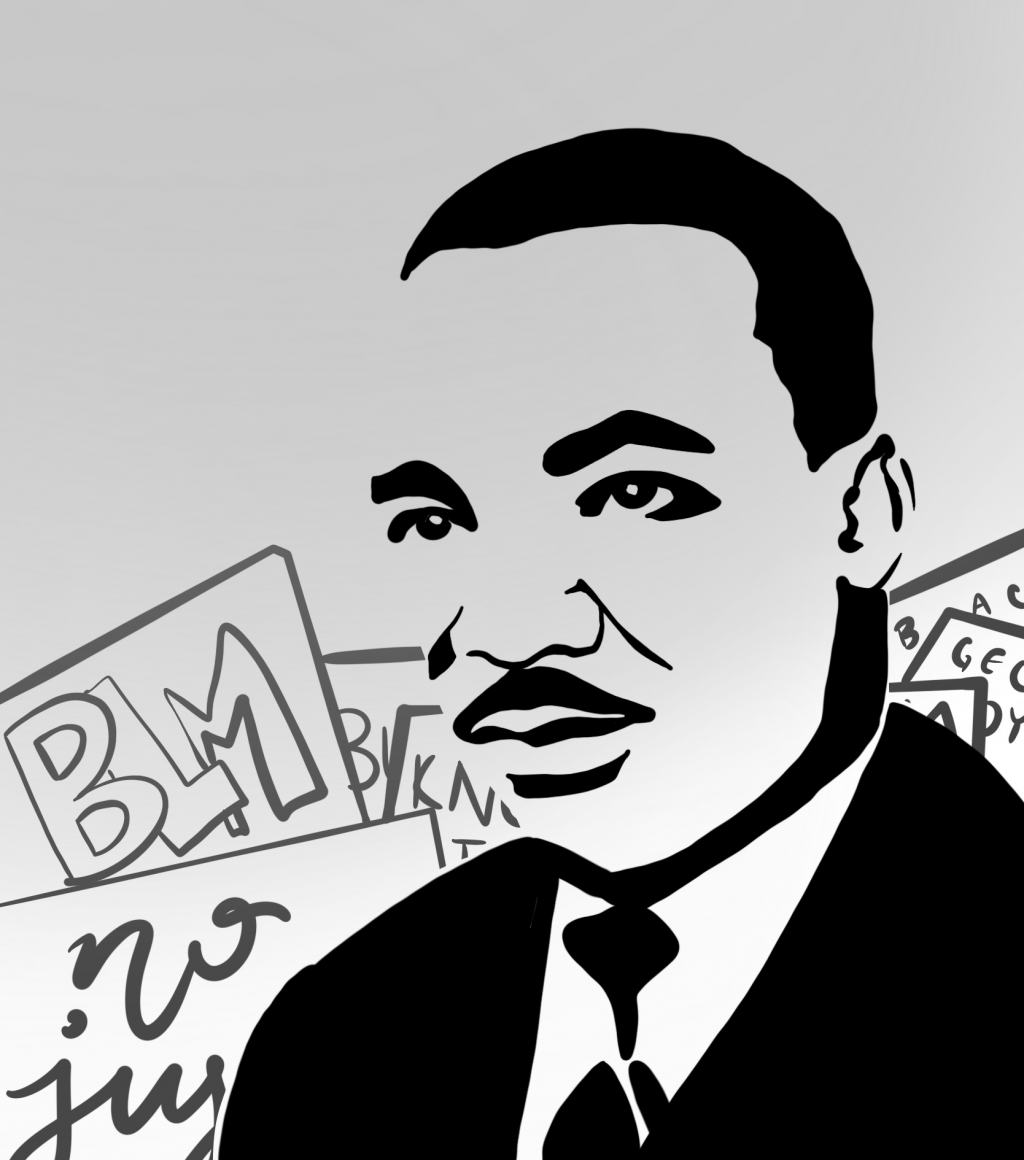Civil rights leader Dr. Martin Luther King Jr. once said, “Injustice anywhere is a threat to justice everywhere.” On May 25, 2020, when a black man George Floyd was killed by white policeman Derek Chauvin, his statement rang true.
Floyd’s death was yet another event in which a Black American had been assaulted without reason other than their race. Due to the country following current events more closely because of the COVID-19 pandemic and a recording of Chauvin’s attack, news of Floyd’s death spread like wildfire. His death struck a chord that the hundreds of racism-fueled Black American deaths hadn’t. Protests, activism, and awareness increased as a part of Black Lives Matter (BLM), a fitting name for a movement calling to “eradicate white supremacy and build local power to intervene in violence inflicted on Black communities.”
BLM had actually begun much earlier than 2020. It started as a project in 2013, in response to the acquittal of George Zimmerman, a white man who had murdered Black teenager Trayvon Martin. Three Black women–Alicia Garza, Patrisse Cullors, and Opal Tometi–founded BLM and continue to lead it as it evolved from a small-scale protest to an international movement.
This movement rings reminiscent of one more than fifty years ago, especially since the 38th annual MLK Day, which honors Dr. King, has recently been celebrated. In the days of the Jim Crow Laws, the country reeked of inequality. Racial segregation was around every corner, and white Americans were barring Black citizens from voting. To address these issues, the Civil Rights Movement launched into action in the early 1920s. Like BLM, it took some time to develop. It wasn’t until 1954 that the movement really started gaining traction when the Supreme Court, in the Brown v. Board of Education case, declared that segregation was now illegal in public schools. More Black Americans started going out on the streets and started protesting for equality–the same virtue the BLM protests are calling for.
There are some key differences between the activism of the two movements. Protests and boycotts for civil rights took longer to organize and were strategically planned. Activism had to be in the flesh in order to make an impact. BLM protests, on the other hand, are more reactive. Its momentum can be credited to the internet: On Instagram alone, the hashtag #blacklivesmatter has garnered more than 26 million posts. This allows for protests to take place right after a violent attack on a Black American. Additionally, activism on the internet can help the BLM movement reach more people.
However, there’s one huge similarity between the movements: activists were met with vehement opposition. Protestors were attacked and arrested in droves by not just police, but firefighters and the National Guard. Vocal activists were mocked, heckled, and threatened by white supremacists.
Despite these struggles, the Civil Rights Movement achieved many legal milestones. These include the Civil Rights Act of 1964, which outlawed segregation in public areas and jobs, and the Voting Rights Act of 1965, which made it illegal to prevent an American citizen from voting. The newfound civil rights were revolutionary changes that are commemorated up to this day with celebrations like MLK Day. BLM has yet to change the federal legislature, but it has already brought racism to light, especially systemic racism. Police reformation and expansion of work and educational opportunities for colored Americans are just some of the things BLM is beginning to achieve.
Of course, America is not perfect and still has to live up to its core belief of equality for all. Racism is still deeply entrenched in our history and our current society. However, if there’s one parallel between the Civil Rights Movement and BLM that deserves recognition, it’s that they show America is progressing. It may be a slow process, but it’s important to remember that it’s the small steps that amount to a big change. As Dr. King used to say, “If you can’t fly, then run. If you can’t run, then walk. If you can’t walk, then crawl, but by all means, keep moving.”
Chloe Cho
Staff Writer
Graphic: Isabella Harelick

